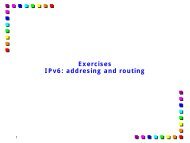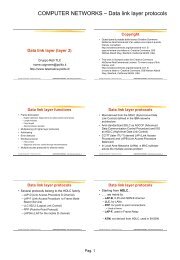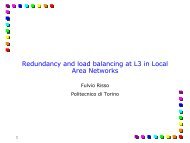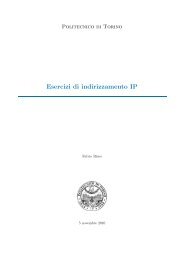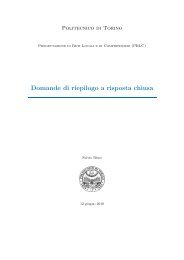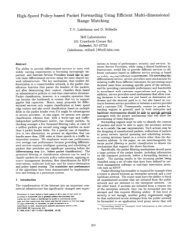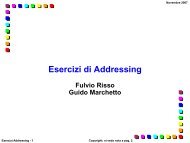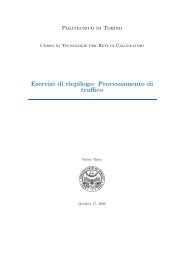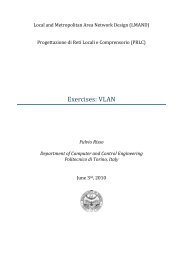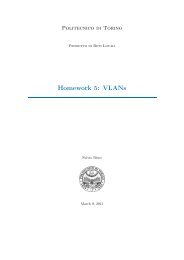Esercizi di Routing - the Netgroup at Politecnico di Torino
Esercizi di Routing - the Netgroup at Politecnico di Torino
Esercizi di Routing - the Netgroup at Politecnico di Torino
Create successful ePaper yourself
Turn your PDF publications into a flip-book with our unique Google optimized e-Paper software.
Novembre 2005 2007<br />
<strong>Esercizi</strong>o 10<br />
• Soluzione<br />
• Le reti C, D ed E sono raggiunte da R1 con route<br />
<strong>di</strong>rette, quin<strong>di</strong> non influenzano l’aggregabilità su tale<br />
router. Vengono quin<strong>di</strong> per ora trascur<strong>at</strong>e nel<br />
computo totale <strong>di</strong> in<strong>di</strong>rizzi necessari per le due aree<br />
definite.<br />
Si ottiene quin<strong>di</strong>:<br />
• Area 1: 248 (+3) + 27 (+3) + 2 (+2) = 284 in<strong>di</strong>rizzi<br />
• Area 2: 120 (+3) + 60 (+3) = 186 in<strong>di</strong>rizzi<br />
• La rete D necessita <strong>di</strong> 120 (+3) in<strong>di</strong>rizzi. Si può quin<strong>di</strong><br />
prevedere un address range /23 per l’Area 1 e<br />
inglobare la rete D in questa area. Si scelgono quin<strong>di</strong><br />
i seguenti address range:<br />
• Area 1: 130.192.0.0/23<br />
• Area 2: 130.192.2.0/24<br />
AddressingIP <strong>Esercizi</strong> <strong>Routing</strong> - 1 - 24 Copyright: si veda nota a pag. 2



